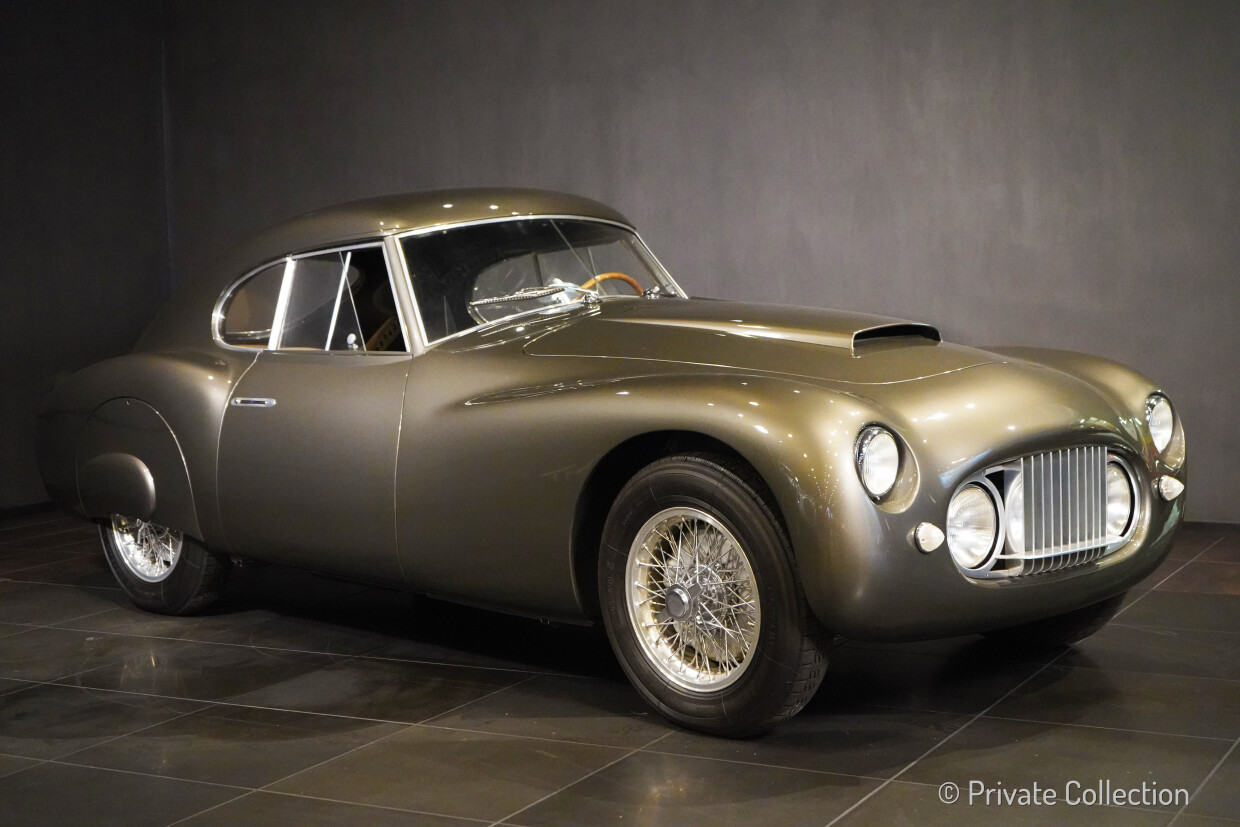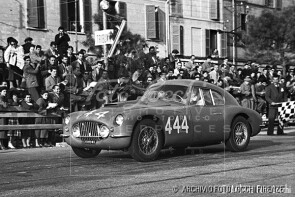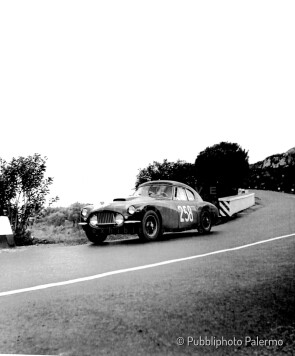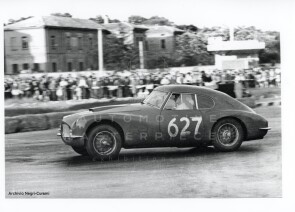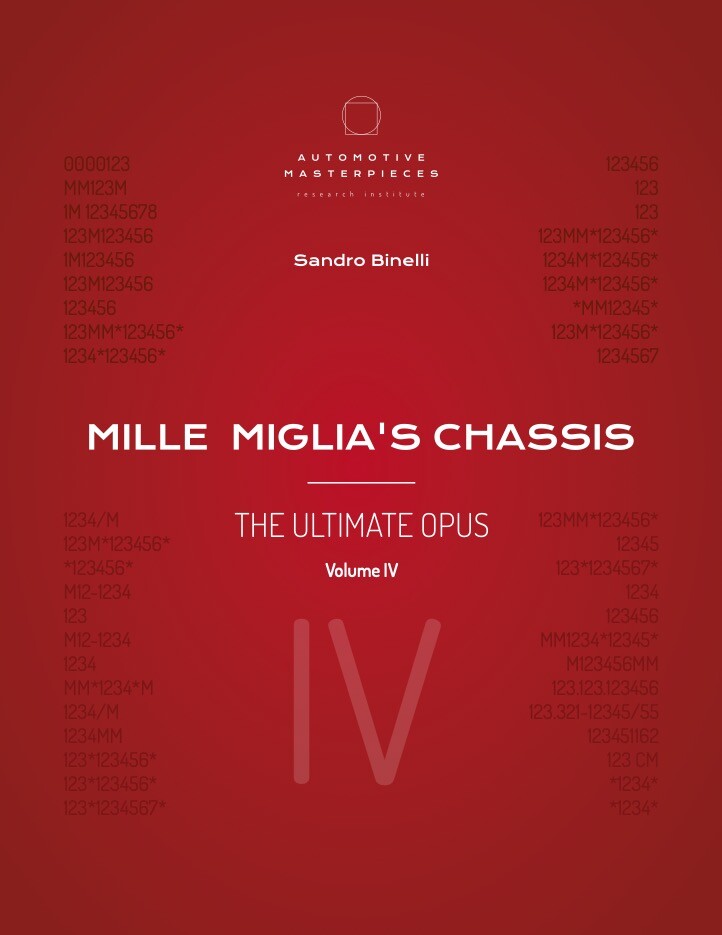
1953 Fiat 8V "Corsa"
ON/OFF
Why am I an Automotive Masterpiece?
G. Team cars
Scuderia Ambrosiana (IT)
J. Movie cars
Mille Miglia 1953 - Un film Shell (IT)
K. Famous chassis’ cars
Last chassis built, out of 4.
L. Limited edition cars
no. 4 manufactured, 4th built. Only 4 cars with "Corsa" specs were made.
In the postwar period, Fiat was working on an eight-cylinder engine internally known as Tipo 106. The engine was originally designed by Dante Giacosa for a luxury sedan, but that project was stopped. Rudolf Hruska, at the time working at the S.I.A.T.A., was given the task to design a car around the V8 engine. The development took place in absolute secrecy. As not to stress the experimental department of Fiat, production of the chassis was also taken up by S.I.A.T.A. Styled by chief designer Fabio Luigi Rapi, the Fiat 8V or “Otto Vù” was presented to the Italian press in February 1952 and first exhibited the following March at the Geneva Motor Show. The car shapes saw several changes in time: the prototype used an art deco grill extending into the hood which initially characterized the examples of the first series. A second series was made featuring four headlights with some of the later cars having a full-width windscreen. A high-performance coupé, destined to compete in the GT class: the 2-liter 8V model was a departure from the usual Fiat production. It was really welcomed by Italian private drivers, it inspired the tuners and it was, in a word, the car to beat in the 2-liter class, also thanks to the special versions built by Zagato or Siata. The Fiat V8 had a 70° V configuration of 1996 cc of displacement, at 5600 rpm the engine produced 105 hp in standard form with double two-barrel Weber 36 DCS carburetors, giving a top speed of 190 km/h. Some engines were fitted with two huge four-throat Weber 36 IF4/C carburetors offering 120 hp, but the intake manifold was very rare. The Fiat 8V is the only eight-cylinder built by Fiat. The engine was connected to a four speed gearbox. The car had independent suspension all round reworking the Fiat 1100 ones and drum brakes on four wheels. As the body was welded to the chassis it was a semi-unitary construction. Only 114 of these high-performance coupés had been produced, 64 of them with a “Fiat Carrozzerie Speciali” body, 34 first series and 30 second series. It was made available anyway in different body styles, offered by the factory and by various coachbuilders like Zagato, Pinin Farina, Ghia and Vignale. The production ceased in 1954.
Chassis no. 106*000034* was the 26th car in chronological order leaving the factory, on April 20, 1953, according to the expert Tony Adriaensens. It’s one of the 34 1st series and is still fitted with its original 1st series body by Carrozzerie Speciali Fiat, designed by Fabio Luigi Rapi. In this case, the car is not a "common" 1st series but has "Corsa" specifications (i.e. "racing", hence the name). It is the last one of a series of only three built for Scuderia Ambrosiana of Milano, in a total of four with these specifications that included: engine type 104.004 with double four-barrell IF 4C carburettors for 127 hp; 5-speed gearbox realized by the “speed wizard” Dagrada, lightweight body and sliding windows. It was delivered new to Ovidio Capelli, italian entrepreneur and racing driver, and immediately transferred to his Scuderia Ambrosiana racing team. A note: Chassis no. 106*000034* differs from its sister car, 106*000032*, by only two digits in the chassis number and by a single number in the (first) Milano plate; they both were “Born to run”, debuting five days after their delivery, at the XX Mille Miglia. The only visible difference, apart from the racing number, was a hood deflector on chassis no. 106*000034*. The car, with Ovidio Capelli himself at the wheel, ranked a very good 20th overall/8th in class. On this occasion the car is also immortalized in a movie: “Mille Miglia 1953 - Un film Shell”. It then continued to race with excellent results, driven by Gianfranco Bornigia who bought it at the end of 1954. The car continued to race in 1954 with excellent results, driven by Gianfranco Bornigia who purchased it at the end of the year. In 1955, among other races, Bornigia brought it back to the Mille Miglia, ranking 48th overall/8th in class. Purchased in 1959 by a US engineer in Rome, the car began its journey to North America. Other changes of ownership between enthusiasts follow and the car is cared for and restored. We find the car again in 1995 taking part in prestigious elegance competitions, such as the Santa Barbara Concours d'elegance, where it qualified 1st in class, and the Pebble Beach Concours d'Elegance, where it was 1st. In 1997 it became part of an important collection. It is featured in various books, including Mille Miglia's Chassis - The Ultimate Opus Volume III, by Sandro Binelli, published by Automotive Masterpieces.
